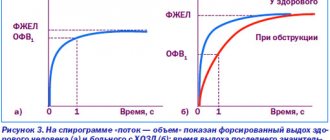- home
- Coloproctology
- Rectal cancer
- Stages of colorectal cancer and their symptoms
Stages of rectal cancer
Rectal cancer is an oncological disease in which a tumor localized in the distal part of the large intestine occurs against the background of pathological changes in the mucous membrane. There are different forms of cancer: the focus of pathology can grow into the lumen of the intestine, over time blocking it, or spread deep into the intestinal wall. Infiltration of the intestinal wall is possible, and the tissue loses its elasticity, which affects its functionality. Gradually, cancer cells penetrate into nearby tissues, and if left untreated, metastases affect other organs, most often the lungs, kidneys, liver, ovaries, etc.
Rectal cancer accounts for 5% of all malignant tumors of the digestive system. For the most part, the disease affects people 40-60 years old, although in recent years, oncologist patients are increasingly becoming younger people. The risk group for morbidity includes patients suffering from ulcerative colitis, proctitis, diffuse polyposis, having fistulas, ulcers, anorectal fissures, rectal polyps - in this case, the risk of malignancy is especially high. Large polyps are dangerous; if the size exceeds 3 cm, then the risk of degeneration into cancer reaches 40-85%. The process of malignancy of a polyp can last several years, but after degeneration the tumor grows rapidly.
How many stages of colorectal cancer are there?
In domestic clinics, the disease is usually divided into stages; rectal cancer has four stages. The classification is based on the size of the tumor, the existing invasion of the intestinal wall and the degree of spread of malignant cells to other tissues and organs.
| Stage | Tumor size and spread | Main symptoms |
| 0 | small tumor within the mucosa; | there are no signs of disease; |
| I | the formation does not exceed 2 cm, mobile, within the intestinal wall, only the mucous and submucosal layer is affected; | asymptomatic; |
| II | the tumor is no more than 5 cm, spreads beyond the intestinal wall, metastases are either absent or present in regional lymph nodes; | indigestion, feeling of incomplete bowel movement, false urge to defecate, rectal discharge; |
| III | the tumor size exceeds 5 cm, the tumor grows into the intestinal wall, there are multiple metastases in the lymph nodes; | persistent constipation, bloating, rumbling in the abdomen, when the intestinal lumen is blocked by a tumor, intestinal obstruction occurs; |
| IV | the tumor is large, immobile, metastasizing to distant organs; | rectal bleeding, pain, stool retention, fever, weakness, vomiting, cachexia. |
Staging is important for choosing the optimal treatment tactics and prognosis of the disease. If at stage 0 or I of rectal cancer it is possible to get by with polypectomy during colonoscopy or intestinal resection, then in advanced cases extensive intervention is assumed. To determine the stage, it is necessary to undergo an examination. In our clinic, patients have access to the most effective examination methods.
written consultation, in order to determine the indications for surgery, as well as choose the correct surgical treatment tactics, you can send me a full description of the colonoscopy, histology data, if possible, MSCT data of the abdominal cavity with contrast, indicate your age and main complaints. Then I will be able to give a more accurate answer to your situation.
Bowel cancer treatment
Surgical treatment of intestinal cancer is the main method. Depending on the stage of the process, the presence of metastases and the size of the tumor, the type of surgical intervention is determined. It can be radical, when the tumor with adjacent healthy tissues is removed, or local. In this case, a malignant formation with a narrow strip of tissue unaffected by the process must be removed.
Surgery is performed using the following methods:
- laparoscopy – the approach to the tumor to be removed is carried out through small punctures in the abdominal wall, through which a laparoscope is inserted; the pathological formation is removed along with the affected lymph nodes, and sutures are applied using special staplers; surgery is performed under general anesthesia;
- colonoscopy - surgery is performed by inserting a colonoscope into the intestines through the anus; the method allows you to remove small-sized malignant tumors in the rectum or colon;
- laparotomy - abdominal surgery with opening of the abdominal cavity is carried out when diagnosing an oncological process in the later stages of its development; Extensive removal of the tumor, affected lymph nodes and tissues is performed.
However, tumor removal alone is not enough, so additional chemotherapy is necessary. This treatment is carried out with potent cytostatic drugs aimed at destroying cancer cells. In the early stages of bowel cancer, chemotherapy is used in the following cases:
- after surgery to prevent tumor recurrence;
- before surgery to reduce the number of pathological cells;
- before surgery in complex treatment together with radiation therapy.
Chemotherapy is prescribed 1.5-2 months after surgery and continues in courses for up to 6 months.
Treatment of stages 3 and 4 of intestinal cancer is carried out comprehensively in the following form:
- palliative surgery;
- chemotherapy;
- radiotherapy;
- hormone therapy;
- prescribing medications to enhance immunity.
Clinical picture
At the initial stage of the disease, there are no unpleasant symptoms, but as the tumor grows, a number of signs appear. Symptoms can be divided into two groups: characteristic of a given pathology and general, occurring in many diseases.
| Symptoms characteristic of cancer | General signs |
|
|
The nature of the discharge is of great importance. For example, with a tumor located in the upper, middle or ampullary section, particles of scarlet blood are present in the stool; with a low tumor location, the discharge resembles fresh blood in appearance. The presence of pus in the stool indicates the development of an infection. The presence of a tumor may be indicated by the appearance of ribbon-shaped feces.
Difference from hemorrhoids
An experienced specialist begins to find out the truth of the diagnosis. The most striking similarities are in the initial symptoms with hemorrhoids.
Differences between the two pathologies:
| Haemorrhoids | Bowel cancer |
| Scarlet blood in bowel movements | Stool output begins with dark-colored blood |
| No mucus | The presence of mucus with an unpleasant, pungent odor The presence of tumor tissue in the stool |
| The form of stool characteristic of normal constipation | Ribbon-shaped feces, ribbon width – up to 1 cm |
| Weight loss due to food refusal due to hunger | Lack of appetite |
| Unnecessary increase in temperature | Increase in temperature to low-grade levels |
A competent specialist can evaluate and make the correct diagnosis. He will select a diagnostic complex and prescribe a course of treatment.
Treatment
The only effective treatment for rectal cancer is radical removal of the tumor. There are a number of techniques, the choice of the appropriate one depends on the stage.
| Stage | Treatment |
| 0 | polypectomy during colonoscopy or transanal excision of the tumor |
| I | resection, less often abdominoperineal extirpation of the rectum |
| II | resection or extirpation, possibly with chemotherapy after surgery |
| III | resection in combination with pre- and postoperative chemotherapy and radiation |
| IV | resection with chemotherapy, removal of metastases, pelvic evisceration |
Along with surgical treatment for rectal cancer, radiation and chemotherapy are used. Treatment tactics are selected for each patient individually. In some cases, preoperative radiation is recommended, the purpose of which is to destroy cancer cells and reduce the risk of recurrence. For some types of tumors (for example, squamous cell carcinoma), only chemoradiotherapy is effective. Chemotherapy can be prescribed both before and after surgery.
Diagnosis of pathology
Oncologists who treat colorectal cancer are guided by general principles.
The main principle is to make a correct diagnosis in a timely manner and prescribe appropriate treatment. At the same time, it is necessary to identify the reasons that caused the pathology.
It is important for the attending physician to know when the first symptoms of the disease appeared, which the patient himself noticed.
Depending on the duration of the disease, the pathology is divided into 4 stages. Various diagnostic methods are used to determine the stage.
Finger examination
Before starting to examine a patient for the presence of rectal cancer, the proctologist takes a detailed medical history.
This rule applies equally to men and women.
For a correct diagnosis, it is necessary to know about close relatives who suffered from diseases of the rectum.
Heredity plays a significant role in predisposition to cancer.
The causes of cancer are often determined by the genetic characteristics of the body.
The simplest and most effective method of primary diagnosis is considered to be digital examination.
Using this method, the proctologist has the opportunity to detect neoplasms in the rectum that are not characteristic of a healthy state of the body.
Video:
It is important to emphasize that the study only records the presence of tumors on the inner surface of the rectum.
It is impossible to determine the pathogenicity or benignity of a tumor using this study.
If a tumor is detected, the doctor prescribes additional testing to determine the causes of its appearance. It is important to obtain information about the presence or absence of cancer.
Instrumental methods
The causes of rectal cancer are identified using more effective methods than digital examination.
READ What are the symptoms and how to treat inflammation of the rectum?
The following methods are considered the most effective:
- sigmoidoscopy;
- irrigoscopy;
- Ultrasound and computed tomography.
Examination of the rectum using a sigmoidoscope can detect ulcers on the surface of the mucous membrane and malignant tumors.
The presence of blood and pus in the lumen of the rectum is determined. The doctor has the opportunity to take samples of the mucous membrane from problem areas for laboratory examination under a microscope.
This method examines both men and women.
To obtain more detailed information about the condition of the rectum if cancer is suspected, an X-ray examination method using a contrast agent is used - irrigoscopy.
Before the procedure, the patient must prepare. The preparation is to completely cleanse the intestines.
The results of irrigoscopy give a complete picture of the size of the tumor and the nature of its development.
When the information obtained in this way is not enough to determine the causes of cancer, the patient is examined using ultrasound. Comprehensive data is obtained after computed tomography of the intestine.
Surgery for rectal cancer
Oncological disease is treated by laparoscopic surgery
The goal of surgical treatment is to ensure the unimpeded passage of intestinal contents; for this purpose, the tumor is removed with part of the adductor and efferent intestines, if possible, with the creation of a primary anastomosis. Regional lymph nodes are also subject to removal.
One of the effective techniques is total mesorectal excision (TME), described in 1982 by the English surgeon Richard John Heald. It is based on the isolation of the rectum under visual control in the avascular zone - in the so-called correct layer - between the intestinal fascia proper (mesorectum) and the parietal fascia of the pelvis. The tissue located in the mesorectum contains lymph nodes, which, as a rule, are affected by metastases. When the rectum is isolated in the traditional way, part of the fiber is separated and remains in the small pelvis, which in 25% leads to the appearance of satellite metastases. TME excludes such a development of events. Based on this technique, intestinal resection is performed: anterior, low, abdominal-anal, abdominal-perineal extirpation.
TME is used today by many specialists, but the disadvantage of the method is the high rates of local relapses. I was able to reduce the recurrence rate from 45% to 5% by performing TME through a laparoscopic approach.
Reasons for the formation of tumor neoplasms
If you have colorectal cancer, the causes may vary and it affects both sexes. The age range of the patient category is quite wide. Rectal cancer is diagnosed from 45 to 75 years of age. The most common causes of cancer:
- long-term retention of feces in the ampullary part of the rectum;
- damage to the anorectal area by chronic forms of pathology: fistula openings, hemorrhoids, colitis, cracks in the skin of the anal areas, proctitis and others;
- genetic predisposition (presence of blood relatives who have had intestinal cancer);
- the presence of polyposis that is not treated;
- age over sixty;
- the presence of papilloma virus in the digestive systems;
- incorrect diet: passion for foods high in animal fat.
In the group of people at risk, open to the appearance of tumor pathology, there remain patients who have suffered the disease in other internal systems. Women who have had cancer of the breast, uterine organs, or genitourinary systems remain under the control of doctors. Knowing the cause of rectal cancer will help eliminate the causes that activate its manifestations.
Smoking leads to illness. This is especially dangerous for women. Of all women exposed to the disease, 40% are smokers. Among men, this percentage is lower – 30%.
Anal cancer can and does develop against the background of carcinogens.
Nitrates, hazardous substances and poisons from industrial emissions into the air, ionization from radiation become causes of intestinal cancer.
Advantages of the laparoscopic technique for total mesorectumectomy
- During the operation, there is a need to intersect nerve fibers, which can lead to urogenital disorders. To prevent such disorders, I use a nerve-sparing technique.
- In the presence of a widespread tumor or small-sized carcinoma, the operation is performed in several stages.
- To form the interintestinal anastomosis, I use modern staplers made in the USA, which helps to minimize the risk of developing postoperative complications, such as stricture or failure of the anastomotic suture.
- Using the LigaSure electrothermal tissue ligation device, ultrasonic scissors, and the Force Triad energy platform, mobilization of the colon is carried out quickly and bloodlessly, there is no need to use surgical clips and threads, and it is possible to preserve nerve fibers.
Considering the psychological state of patients when removing part of the intestine to the anterior abdominal wall, I strive, if possible, to perform organ-sparing operations while maintaining the continuity of the intestinal tube and rectal sphincter.
I have personally performed more than 300 laparoscopic interventions for diseases of the large intestine. The results of the operations are summarized in the monograph “Minimally invasive surgery of the colon.” Information about the surgical treatment methods I use can also be found in numerous peer-reviewed scientific publications.
Causes of development of a malignant tumor
Even in the 21st century, scientists do not know the exact cause of colon cancer. However, there are factors that increase the risk of developing the disease.
10 risk factors for colon cancer:
- nutritional features;
- contact with carcinogenic substances;
- influence of radiation;
- some types of viruses;
- constant stressful situations;
- injuries to body tissues;
- the presence of benign neoplasms in a person;
- hormonal imbalances;
- weakened immune system;
- heredity.
Colon cancer can be caused by poor diet. Scientists tend to believe that some foods have a pathological effect on the lining of the colon.
READ How long is the human rectum?
It is known that in Japan, where they eat almost no meat, colorectal cancer is much less common than in other developed countries. Cancer rarely occurs in vegetarians, although it is more common in raw foodists.
This suggests that animal food may serve as an unfavorable factor in the development of intestinal cancer.
In addition to meat, high-calorie foods, fast food products (convenience foods), and alcohol abuse can have a negative effect on the lining of the colon.
Some chemicals that can react with DNA cells can give impetus to the development of carcinogenesis - the so-called process of tumor formation.
They are commonly called “carcinogens”. This role in the development of intestinal cancer is played by fumes or dust from metals, plastics, vinyl, and asbestos.
X-ray radiation, microwave radiation and even ultraviolet radiation - sunlight - can also cause the degeneration of colon tumors in young people.
There is a theory about the viral origin of cancer. At the moment it is not known for sure whether this is true, but some types of viruses can accelerate the development of the disease.
These are viruses:
- Epstein-Barr;
- human papillomas;
- hepatitis.
Stress influences the development of many diseases, and colorectal cancer is no exception. Carl Jung also wrote that the cause of oncology is negative emotions that destroy a person from the inside.
In order to prevent cancer, he considered psychotherapy most effective for women and men.
Injury to the intestinal mucosa increases the risk of malignancy.
Injury to the rectum can occur with chronic constipation, as well as during anal sexual intercourse.
Scientists have noticed that the percentage of patients with colorectal cancer among homosexual men is much higher than among other categories of people.
Precancerous diseases have a high probability of transforming into cancer.
These diseases include damage and benign tumors of the colon lining:
- adenomatous polyps, especially villous ones;
- ulcerative colitis;
- anorectal fissures;
- fistulas;
- Crohn's disease.
Hormonal imbalances in women and men can also affect the development of malignant intestinal tumors.
If a person is completely healthy and has a good immune system, then his risk of getting cancer is minimal. But as the immune defense declines, the likelihood of developing cancer increases.
Predisposition to cancer can be inherited. If close relatives have had cancer, the risk of developing a malignant tumor increases.
Video:
People at risk should be monitored for any gastrointestinal symptoms.
In order to detect the occurrence of a tumor in time, such people are recommended to undergo regular diagnostics of the rectum using an endoscopic apparatus.
In addition to the risk factors described above, rectal cancer in young women and men can be caused by:
- excess weight;
- sedentary lifestyle;
- smoking, including passive smoking.
Prognosis for rectal cancer
If the tumor grows within the intestine itself for a long time, then in most patients, with timely treatment, the chances of a complete recovery are very high. The stage of the disease also affects survival in colorectal cancer:
- with 0-I, the five-year survival rate reaches 90%;
- in II – about 60-85% of patients recover;
- III - cure is possible in 25-60% of patients, the effect largely depends on properly prescribed treatment;
- Stage IV - has the most unfavorable prognosis, survival rate is only 7%.
Despite the availability of effective diagnostic methods, most cancer cases are diagnosed late due to a person's reluctance to see a doctor when the first symptoms appear, which reduces the chances of a full recovery.
Scientists' data
Medical statistical information is constantly collected to analyze the development of pathology. Scientists are interested in the number of patients who contact specialists regarding suspicion of a terrible disease. Just the name of the disease already becomes a factor in the fear of death, so all the data helps a person gain hope and understanding that there is always a way out.
Among all cancers, anal cancer ranks third.
- A malignant tumor of the rectum is detected in half of the cases of gastrointestinal neoplasms diagnosed by doctors. The disease begins from damage to tissue cells by a tumor, degeneration of the mucous surface by epithelium of a dangerous disease. The tumor seeks to grow into neighboring organs and damage as many cells as possible.
- Anal cancer is common due to the sensitivity of the location. Not every person immediately goes to the doctor; he tries to find information on how to treat the pathology himself, and misses an important stage of influencing the tumor. Experts advise to abandon complexes and modesty; you should go to an appointment immediately at the first manifestation of unpleasant sensations.
There is no point in looking at what the disease looks like in textbooks in search of similarities.
Treatment of rectal cancer often has a positive prognosis for recovery more often than other tumor diseases, but with timely treatment:
- Cancer of the lower ampullary rectum will be determined by a doctor during a visual examination. The study method is palpation. The structural features of the human body make it possible to do this on the first visit;
- in the early stages, new tumors undergo endoscopic examination; such equipment is available in most medical institutions; it is not rare or expensive, but common, constantly used in the diagnosis of various health conditions.
It is difficult to cure rectal cancer, but it is possible; it cannot be neglected and left without treatment. It will not go away on its own, it will not resolve, as some patients hope.
Diagnostics
Diagnosis of colorectal cancer begins in the doctor's office, who asks the patient about accompanying symptoms, how long ago they began to bother them, and whether there is a risk of heredity. Next, the patient is sent for laboratory diagnostics, which includes a blood test for tumor markers, biochemical analysis, and a coprogram. Instrumental diagnostic methods include sigmoidoscopy, colonoscopy, irrigoscopy; if there is a need to take a sample for histology, laparoscopy is prescribed. For a more detailed examination of the intestine, identifying the degree of metastasis and damage to neighboring organs, the patient is advised to undergo MRI or CT diagnostics. After the diagnosis is confirmed, the stage and type of tumor is determined, the doctor selects a treatment regimen.
What kind of disease is this?
A tumor of an oncological nature that affects the distal rectum and anus is called rectal cancer. According to ICD 10, the disease was assigned code C20 “Malignant neoplasm of the rectum.” Pathology most often manifests itself in males after 45 years of age. Despite the fact that the rectum is not problematic to examine and check, pathology is still detected at an advanced stage of the tumor. Therefore, at the slightest suspicious symptoms, it is important to consult a doctor and undergo preventive medical examinations in a timely manner.











